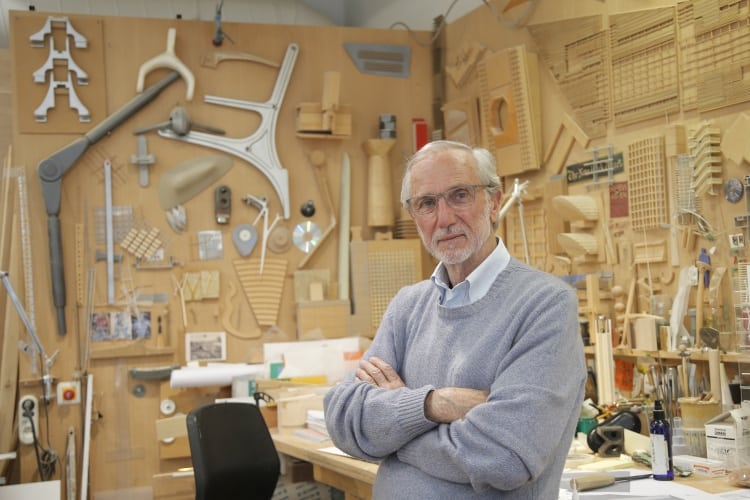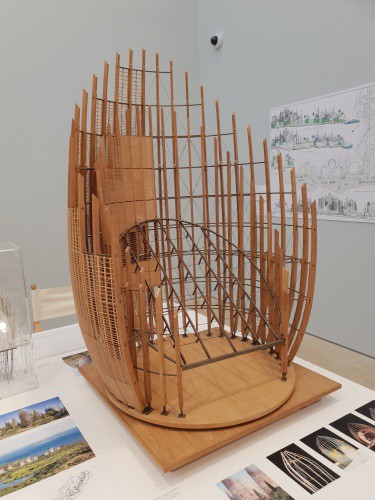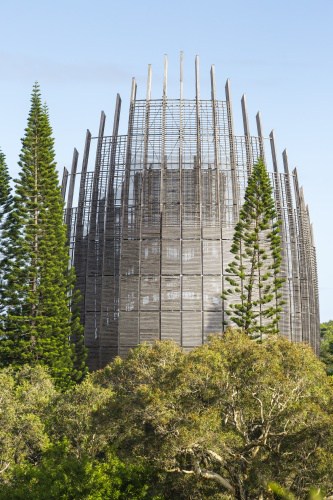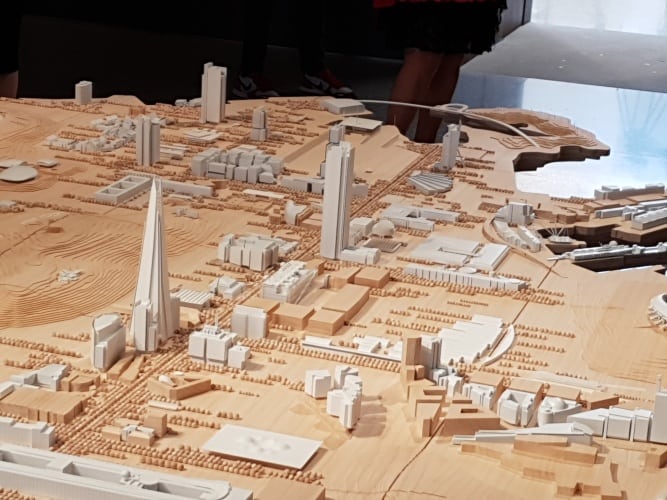 Stuart Nathan
Stuart Nathan
Features Editor
Few modern architects have engaged with engineering as much as Renzo Piano. A new exhibition at London’s Royal Academy illustrates and celebrates how he has woven the two disciplines together.

As I wrote in our current issue’s interview feature, architects are not engineers. However, to the octogenarian architect Renzo Piano, whose best-known buildings include the Pompidou Centre in Paris and London’s Shard skyscraper, the two disciplines are intimately interwoven, and throughout his long career he has engaged with innovative materials and construction techniques taken from the more mainstream engineering disciplines to a greater degree than most other architects.
The new exhibition at the Royal Academy, spread over three airy rooms in a new extension opened to mark the institution’s 250th anniversary, focuses on 16 of Piano’s major projects, ranging from his work prior to co-designing the Pompidou Centre with Richard Rogers in 1971 when he was 34, up to two projects that are currently in construction – the Motion Picture Academy Museum in Los Angeles, and a centre for emergency children’s surgery in Entebbe, Uganda.
Born into a family of builders near Genoa in Italy, Piano grew up on and around building sites and had an early interest in construction ignited by visits to the harbour of Genoa, where he would watch boats coming and going and muse on how they had been built. In a film made to accompany the exhibition, he reveals that his first construction project – building his own boat in his father’s garage – hit a snag when it was too big to get out through the doors. This early experience fixed into his working procedures and appreciation of engineering. Speaking to journalists at the opening of the exhibition, Piano paid tribute to engineer Peter Rice of Arup, who collaborated closely on many of his projects and who passed away in 1992.
Throughout his career, Piano has been concerned with the “legibility” of buildings: making it clear to observers how they have been built and how they are held together. The Pompidou Centre is perhaps the most famous example of this. Designed so that its interior is a completely open space with no columns, all of its services are visible on the outside of the building, and the glass walls make features like its escalators into a visible part of its design. Structural features such as braces – which Rice was involved in designing – are also located on the outside of the building, and one of these – at full-scale and painted bright red – has been placed outside the entrance to the Academy’s new galleries as a sculpture.

Another striking example of Piano’s approach to engineering and architecture is the IBM travelling pavilion, a transparent tunnel-like structure designed in the 1980s as a mobile exhibition for the company’s early business computers (it visited London and York). The pavilion is composed of only three materials: wood, cast aluminium and polycarbonate. The exhibition explains how Piano worked with engineers from the automotive industry to explore how their new adhesives could be used to make strong laminated wood structures: one of the first times this “gluelam” material had been used in architecture. Aluminium was chosen because it is lightweight, and cast to make maximum use of its potential to make structural forms. Materials use is clearly of great interest to Piano: another exhibit, concerning the beautiful Jean-Marie Tjibaou Cultural Centre in New Caledonia (model, left), mentions how Iroko wood was used in its construction because it is not consumed by the local termites.

The exhibition is laid out – in consultation with Piano himself – to draw the eye upwards, with many architectural models hanging from the ceiling. These include a model of the terminal building and main corridor of Kanzie airport in Japan, which resembles a spine from some angles and a set of outstretched wings from another. The roof of the terminal building itself is aerofoil-shaped, which draws air in and reduces reliance on electrical air conditioning.

Piano’s use of innovative techniques has continued to the present day. The lower floors of the Shard were built using a “top-down” construction method, which allowed them to be built before a basement and foundations had been excavated. In the Entebbe project, Piano is reliant on donated materials and has been experimenting with rammed earth construction techniques: an ancient building method, but not one commonly used on public buildings of this scale.
Throughout the exhibition, it is clear that Piano is dedicated to public architecture, and places great emphasis on including open spaces in his projects where people can circulate and mingle. In the accompanying film, he explains that to him, this is one of the great benefits of architecture. “We build tolerance,” he says. “The great challenge of the 21st century for us is to bring peripheries into the urban space.” Piano even insisted on movable chairs being placed around the exhibition space, so that people can spend some time seated and watching the other visitors move around the exhibition.
The exhibition itself makes use of engineering: subtle sound design brings the noises of the surroundings of the featured buildings into the areas around exhibits, adding atmosphere.
The exhibition continues for the next five months and is well worth a visit for any engineers with an interest in large construction projects or in architecture in general.
"Renzo Piano: the Art of Making Buildings" opens to the public on 15 September.




Nanogenerator consumes CO2 to generate electricity
Whoopee, they've solved how to keep a light on but not a lot else.